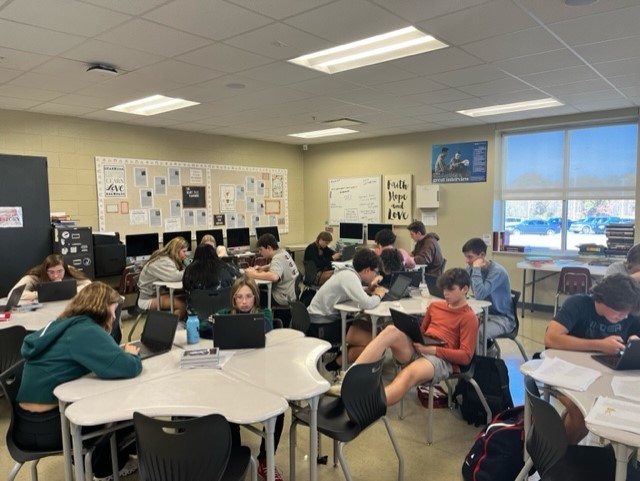Does Class Size Matter?
November 2, 2022
With smaller class sizes students will be more encouraged to learn and teachers will be more attentive to their classrooms. These classes should at least have an amount of 15-20 students, this would allow for more comfort, and for the teachers, this would allow for better monitoring, more one-on-one time, and more project-based learning. When a classroom is too small there may be a lack of participation to keep the room quiet. When a class is too large, there is a higher potential for the students to act out, not do their work, and making it more difficult for others to learn in that environment. Having an average-sized classroom (15-20) enhances better efficiency from the teacher, not having so many students to get grades for, and allows for grades to be put in quicker, in turn, making time less overwhelming for them. When a class is average sized teachers may feel that there is more attention they can give to all of their students and they also can do more work for their class such as lesson planning, grading, etc.
 Isabelle Story, a senior at McCracken County High School, was asked a few questions regarding this topic, this is what she has to say. When asked “Do you think classes thrive when smaller? Why?” she responded, “Yes, I do. When a class is smaller there is a better connection between all the students and teachers, the teacher has time to answer questions I may have and I don’t feel like a burden when I ask.” Another question Story was asked was, “Do you feel teachers are more helpful in large, small, or average class settings?” She answered, “I think teachers work better in small or average environments because they can cover more content and answer more questions the class has.” Ultimately, a smaller or average class size will benefit both the students and the teachers, rather than having such a large one.
Isabelle Story, a senior at McCracken County High School, was asked a few questions regarding this topic, this is what she has to say. When asked “Do you think classes thrive when smaller? Why?” she responded, “Yes, I do. When a class is smaller there is a better connection between all the students and teachers, the teacher has time to answer questions I may have and I don’t feel like a burden when I ask.” Another question Story was asked was, “Do you feel teachers are more helpful in large, small, or average class settings?” She answered, “I think teachers work better in small or average environments because they can cover more content and answer more questions the class has.” Ultimately, a smaller or average class size will benefit both the students and the teachers, rather than having such a large one.












